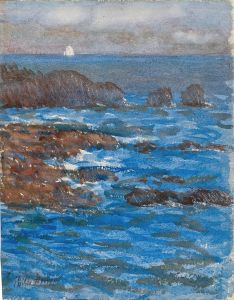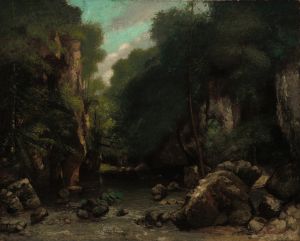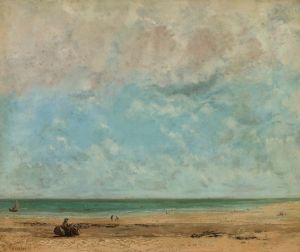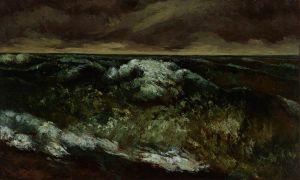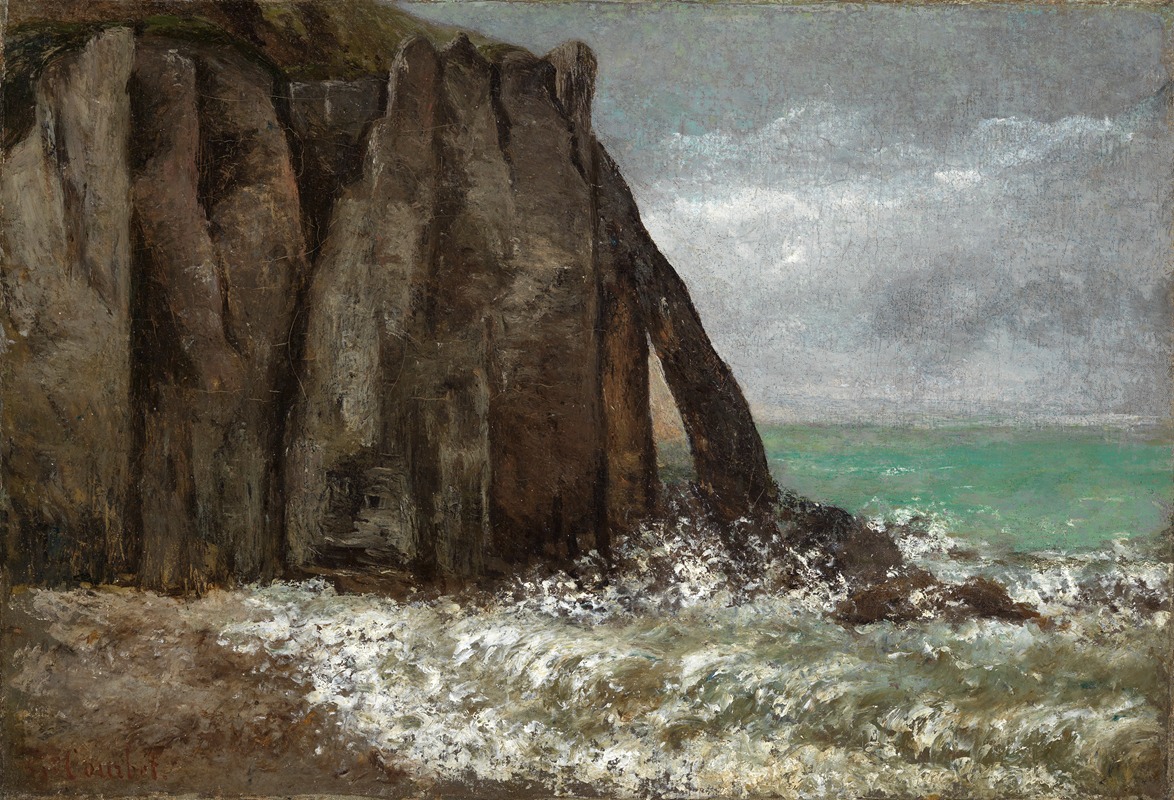
Strand von Etretat
A hand-painted replica of Gustave Courbet’s masterpiece Strand von Etretat, meticulously crafted by professional artists to capture the true essence of the original. Each piece is created with museum-quality canvas and rare mineral pigments, carefully painted by experienced artists with delicate brushstrokes and rich, layered colors to perfectly recreate the texture of the original artwork. Unlike machine-printed reproductions, this hand-painted version brings the painting to life, infused with the artist’s emotions and skill in every stroke. Whether for personal collection or home decoration, it instantly elevates the artistic atmosphere of any space.
Gustave Courbet's painting "Strand von Etretat" (translated as "The Beach at Étretat") is a notable work by the renowned French artist, who was a leading figure in the Realist movement of the 19th century. Courbet, born in 1819 in Ornans, France, was known for his commitment to painting realistic scenes and subjects, often focusing on landscapes, seascapes, and scenes from everyday life. His work challenged the conventions of the time, which were dominated by Romanticism and historical painting.
"The Beach at Étretat" is one of Courbet's many seascapes, a genre he explored extensively throughout his career. Étretat is a small coastal town in the Normandy region of France, famous for its dramatic cliffs and natural arches. These geological formations have inspired numerous artists, including Claude Monet and Eugène Boudin, but Courbet's interpretation is distinct in its focus on realism and the raw power of nature.
In this painting, Courbet captures the rugged beauty of the Normandy coast with a focus on the interplay between the sea and the land. The composition typically features the iconic cliffs of Étretat, with their striking white chalk faces, set against the turbulent waters of the English Channel. Courbet's technique is characterized by his use of a palette knife, which allowed him to apply thick layers of paint, creating texture and depth that convey the physicality of the scene. This method also helped him to capture the changing light and atmosphere, which are central to the painting's impact.
Courbet's seascapes, including "The Beach at Étretat," are celebrated for their dynamic compositions and the way they convey the movement and energy of the natural world. Unlike the idealized landscapes of earlier periods, Courbet's work presents nature in its raw and unembellished form. This approach was part of his broader artistic philosophy, which sought to depict the world as it was, without romanticizing or idealizing it.
The painting reflects Courbet's interest in the natural environment and his ability to convey its power and beauty. His work at Étretat was part of a larger trend among artists of the time who were drawn to the region's unique landscape. Courbet's paintings from this period are noted for their boldness and their departure from traditional landscape painting, emphasizing the artist's role as an observer of the natural world.
Courbet's influence on the art world was significant, as he paved the way for future movements such as Impressionism, which also focused on capturing the effects of light and atmosphere. His commitment to realism and his innovative techniques continue to be studied and admired by art historians and enthusiasts alike.
"The Beach at Étretat" remains an important example of Courbet's work and his contribution to the Realist movement. It exemplifies his skill in capturing the essence of a place and his dedication to portraying the world with honesty and integrity. Today, Courbet's paintings can be found in major museums and collections around the world, where they continue to inspire and captivate audiences with their powerful depictions of nature.






